6+ Sample Work Order Agreement
-
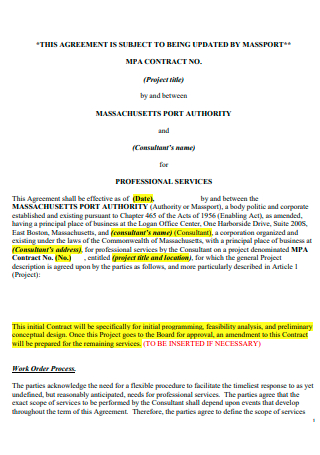
Work Order Agreement Template
download now -
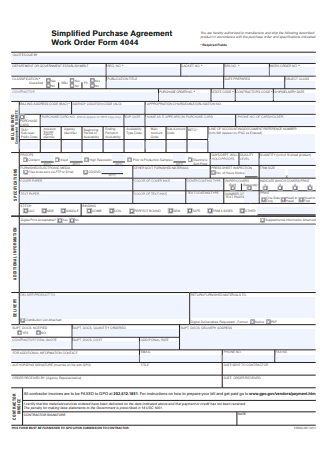
Work Order Purchase Agreement Form
download now -
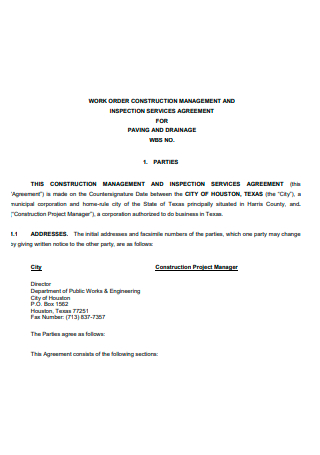
Work Order Construction Management and Inspection Services Agreement
download now -
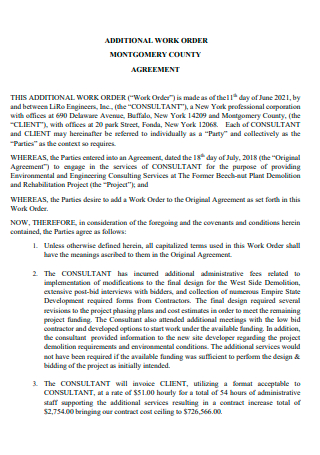
Additional Work Order Agreement
download now -
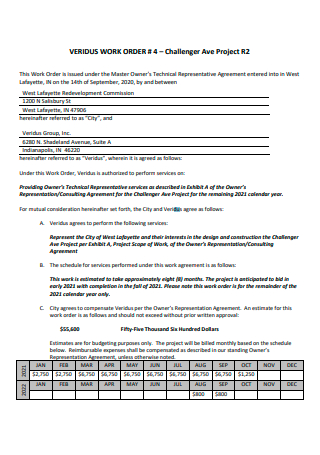
Work Order Project Agreement
download now -
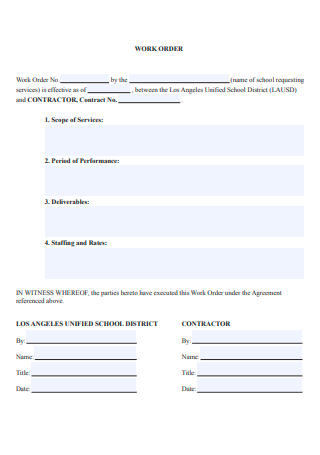
Basic Work Order Agreement
download now -
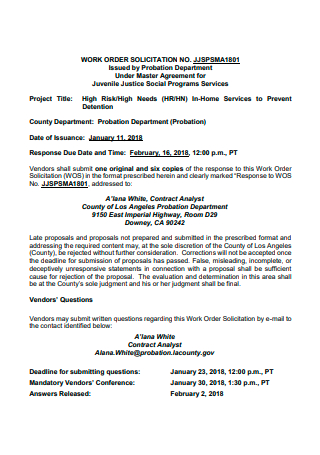
Work Order Solicitation Agreement
download now
FREE Work Order Agreement s to Download
6+ Sample Work Order Agreement
What Is a Work Order Agreement?
The Work Order and Its Different Types
A Step by Step Guide on Creating a Work Order Agreement
FAQs
What are the details usually found in a Work Order Agreement?
What is the purpose of a Work Order Agreement?
Is a Work Order different from a Purchase Order?
What are the advantages of a digital form of a work order agreement?
What Is a Work Order Agreement?
A work order agreement is a written document that assigns or authorizes a certain job or task to be performed by an individual or a group of people usually for installation, repair or maintenance. In most industries, a work order agreement is the first step in establishing a contract between the parties involved in order to get some type of labor or service to be done. It is an internal written agreement most often used in project or contract-based businesses. It’s main importance as a document is to determine what needs to be done, how it is to be done, the workaround timeline it needs to be completed, the cost involved for the service, and other specific details or special instructions included in the task. The inclusion of all the details of the task to be done in the work order enables the business or the organization to stay organized since they can be able to track the work progress and details of the job, document the expenses, and it also ensures that required supplies and products are sufficiently provided in order to complete the job on hand. It must be properly assessed by the service provider and accepted by the client. A work order agreement is generally used in companies that do repair and maintenance plan or work, and often comes after a duly conducted inspection of the system, facility, equipment, or machinery that need to be fixed.
All kinds of business or industry at some point would utilize a work order in their operation. There are some industries that would use them more often than others, and sometimes at a regular planned schedule. These industries are the manufacturers, field service, health, chemical, and facility or infrastructure management. A typical lifecycle of a work order is the creation or production, schedule, work in progress, closing the work order or task ended. The creation or the production stage is the analysis, inspection, and creation of the work order that needs to be done. The next stage is the scheduling, the timeline for the actual work to be started and completed. Next is the work in progress, where the continuous monitoring of the work, or labor, resources or expenses takes place. Last is closing the work order, or task ended, signing off the completion of the work order after the labor or services has been completed as per agreed upon. Work order agreements can be in the form of a printed document, or even nowadays, can be in a digital form.
The Work Order and Its Different Types
There are many types of work orders, depending on the industry where the client is at. It’s good to note that although they may vary from work type, cost and resources, they all follow the same cycle or progression from start to finish. Below are some of the common types of work orders:
A Step by Step Guide on Creating a Work Order Agreement
Once you have an overall idea on the types of work orders that exist, it’s time to create that work order agreement. Work order agreements are usually made by the service provider or by the contractor. Creating a work order agreement is usually not that difficult since it has similarities to any kind of regular contract. Having an idea of what are the essential elements of what makes up a work order would be helpful. We have existing work order templates on our website to choose from that you can download to serve as your guide in creating one. Nevertheless, here are some of the essential steps in creating a work order agreement.
Step 1: Problem Description
Also known as Job Description. Write down the specific problem that needs to be addressed and worked on. Include in the details when the problem started. If it’s a maintenance concern, include when was the last maintenance work conducted on the equipment or machinery or vehicle. You can write down actions expected or required to be taken, actual or past service performed, and other procedures necessary to complete the job. Describe the details as appropriate to the industry that you will be servicing.
Step 2: Write Down the Work Instruction and Assignment Details
Aside from the writing the specific work to be done, also include any special instructions or if there any modifications needed to be made. Since a work order assignment is created by the service provider or the contractor, write down the name of the party or the individual requesting for the service. Include the name, address, contact number, and the location of the facility where the work is expected to be done. Note down as well the date and time the request was made.
Step 3: Identify the Work Turnaround Time and the Priority Level
Write down the timeline for the work duration; when it will be started and when it is estimated to be completed. Classify the priority level of the work if it is a low, medium or high priority. Assign a work order number for record keeping and tracking purposes.
Step 4: Labor, Tools and Cost Requirements
This is where you make a thorough description of the work to be conducted. If necessary, write down the name of the individual who is assigned to do the labor or the service. If it’s maintenance and repair work, write down any parts or materials that need to be replaced and the corresponding cost for purchasing new ones. If it’s an installation of a new product, write down the number of products to be installed and any raw materials or tools to be utilized. Include as well the cost of the labor. This is for the purpose of invoicing and payment later on.
Step 5: Sign-Off
If the client conformes with everything that’s on the work order agreement, have the client sign off on it, and send the work order agreement to the designated party or individual who will be doing the labor or service.
FAQs
What are the details usually found in a Work Order Agreement?
Essential components of a work order agreement are: the title or the job description; details of the customer or the business organization requesting for work to be done; details of the assigned individual or team to perform the work; the timeline for completing the work and the priority level; the cost and expenses involved; and the labor, resources, tools, equipment and support required to complete the job.
What is the purpose of a Work Order Agreement?
A work order agreement details the contract of work or service to be undertaken by a service provider or a contractor. It lays out the details of the job, the services and scope of work required, the timeline of the work, and the expenses involved to complete the work.
Is a Work Order different from a Purchase Order?
A work order usually deals with the labor and services, while a purchase order deals with the actual purchase of goods and products. A work order can include a purchase order to show what were the materials and equipment bought that were necessary for the work at hand, but on the other hand, a purchase order can be a separate deal from a work order, or does not come along together with a work order.
What are the advantages of a digital form of a work order agreement?
Convenience, efficiency and accessibility are some of the advantages of having a digital work order agreement. It saves a lot of time accessing the form since it is done through digital electronic form and can be virtually accessed everywhere with the use of a smartphone or a tablet. It also saves a lot of communication time between the parties involved, and can set the motion of the work or service to be performed in no time. Approval and sign off could be done via email and digital signatures. Another advantage is going paperless and reducing storage costs for the documentation.
Mr. John Doe has now a solution to his leaky pipe problem. The plumbing company hands him the work order agreement. John happily signs off on the agreement, and the plumbing company sends out the contractor to start fixing the pipe problem on the agreed date. Seeing the convenience of having a third party come in and fix the problem rather than fixing the problem himself, John got into talks with the plumbing company to avail of their preventive maintenance service later on. And all of this is made possible with an effective work order agreement between the two parties.
If you are a service contracting business, or even a consulting business, and you want to find out how you can make a work order agreement for your clients, head on to our website and download our work order agreement templates. Find out how smooth and easy it is to use one of our work order agreement forms!
